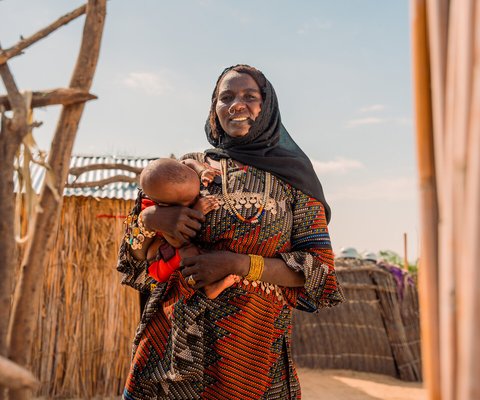Some farmers harvested a bumper crop of rice despite the pests that threatened their fields.
Each year a nearly imperceptible pest causes highly visible damage to rice crops in Haiti. Verifying its presence—it cannot be seen with the naked eye and lives within the leaf sheath—is never easy. Killing the pest isn’t any easier it, as the farmers and the agricultural bureaus meant to support them chronically lack the funds for pest control.
In Verrettes, it got much easier in 2013, thanks to Oxfam America’s success in improving ties between two farmers associations and the government’s local agricultural bureau, known by its acronym, BAC. Together, they not only eradicated the pests but produced a bumper crop.
The initiative is part of Oxfam’s work with local partner organizations to reinvigorate the agriculture-based economy of the Artibonite valley in the wake of Haiti’s devastating earthquake four years ago. The consequences of that disaster rippled across the nation, highlighting the urgent need to boost opportunities for rural Haitians so they could make better livings for their families.
The success of the battle against the bugs is one of the happy outcomes of the coordination between farmers and government officials that Oxfam’s $500,000 project has aimed to improve. The overall goal of the project is to increase the income of farmers.
Last summer, BAC monitoring agents noticed that the rice husks had turned brown and the leaves were becoming brittle—calling cards of aggressive rice panicle mites, referred to locally as “rice ticks.” When they were discovered, the mites had infested 44 hectares of rice in a section of the Verrettes commune known as Liancourt, according to Verrettes BAC director Figaro Noel.
Just one day after hearing about the infestation, Noel asked the government agency known as ODVA, or the Organisme du Développement de la Vallée de l’Artibonite, to verify the presence of rice ticks and get pesticide and pumps into the hands of farmers. “I heard about the ticks at a meeting attended by Oxfam America, AILA , MAFLPV , and BAC,” said Noel, referring to the two farmers associations Oxfam has been working with. “I didn’t take long to react.”
Because the plots had been infected in 2012, BAC was on the lookout again. But detecting rice ticks early is a tricky business. Not only are they tiny but they’re translucent and can often escape detection until their populations swell. To make matters worse, virgin females are parthenogenetic and capable of mating with their male offspring. A single unmated female on a mite-free rice plant can develop into 79 mites in only 17 days.
This time it was a close call: With the help of the Ministry of Agriculture and ODVA, the BAC verified the infestation during the height of the pests’ reproduction and feeding cycle when the stalks are green and contain a milky white substance craved by the fecund mites.
“The infestation was high, but we got there in time,” said Noel. Using pumps supplied by BAC, the farmers bathed the fields with an emergency application of pesticide bought from BAC at half price.
Not only did they get there in time, but farmers harvested seven tons of rice per hectare, well above the national average of 3.5 tons. That was thanks to the training close to 400 of them received on a new growing method called the System of Rice Intensification, or SRI. Though the method can be more labor intensive and the soil requires more diligent preparation than traditional rice farming, SRI techniques can double yields with less water and fertilizer.
Key to the cooperation between BAC and the farmers associations has been regular meetings attended by both farmers and government officials. “These meetings are very important,” said Noel. “The tick attacks on both blocks was raised in one of those meetings.” More importantly, he added, so were solutions.
What will happen next growing season?
“The hope is the government will find this coordination of value and that it could be adopted more widely and become the norm,” said Sarah Belfort, Oxfam’s program policy advisor for Haiti.



